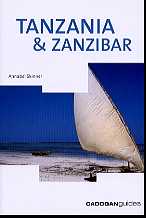A steady influx of traders and farmers into Arusha in the 19th century, notably Indian traders, private German farmers and immigrant Africans, stimulated economic growth, prompting the German administration to conceive an 'idealistic' vision of a vast white settlement of their own construction. The Germans came up with several schemes to import settlers-from bizarre backgrounds.
The first of these plans back-fired when the Boer farmers of German origin who had taken up the offer of free farmland proved too uncouth for the ideal community; they were mainly squeezed out into Kenya.
The grand scheme was revised: now 10,000 German peasants from settlements around the Volga Basin and Caucasus in southern Russia were to be imported. The four families who arrived as a test project were painfully disappointed to discover that Arusha did not have four harvests a year, as they had been led to believe, and soon made their way to Tanga begging to be sent back to Russia.

